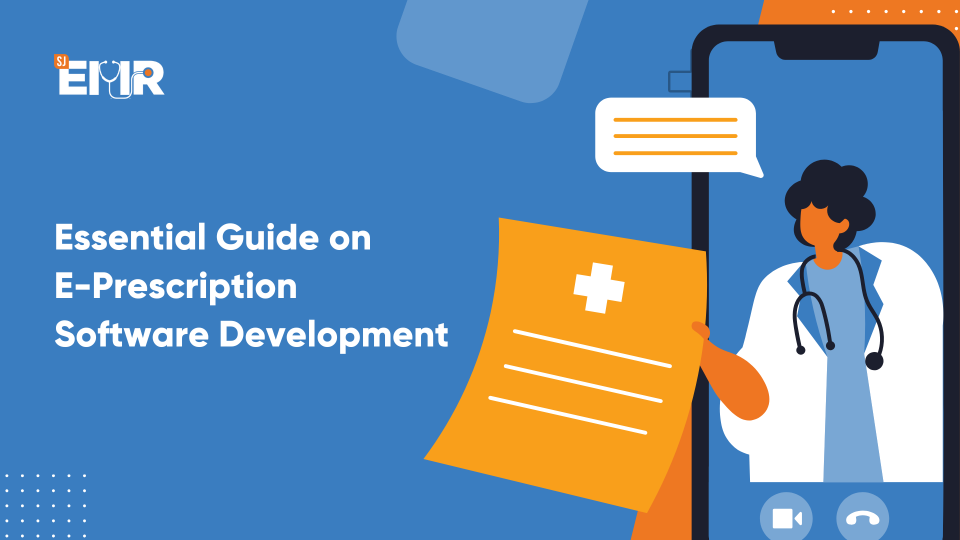Essentials to Know about Before Implementing Electronic Medical Records

কেন মেডিকেল সেটআপে ই-প্রেসক্রাইবিং সব থেকে বেশি প্রয়োজন?
April 26, 2022
Potential of EMR System in Bangladesh
September 2, 2022In the medical world, choosing an Electronic Medical Record (EMR) is a step in the right direction — on the path to digital transformation. After all, it means doctors and medical professionals don’t need to go through the laborious task of maintaining handwritten records and legacy processes. With an EMR, physicians can digitize and coordinate with the clinic’s existing workflow with a lot of time to spare.
However, there are certain aspects you need to consider when adopting EMRs into your medical system. After all, integrating an EMR is a costly and time-consuming process. Keeping this in mind, here are a few essentials to know about before setting up Electronic Medical Records (EMR) at your medical practice.
Know whether you are prepared for an EMR
While you may be in need of an EMR system, whether your medical facility is prepared for it or not is another question.
- Before going in for an EMR system, understand your medical setup’s readiness — staff experience and skills, IT infrastructure, and attitudes.
- Conduct a survey to make it easy to recognize gaps in training as well as the level of expertise.
- Also pay attention to leadership and management, operations, overall ambience and culture, workflow and process improvement as well as the technology involved.
Ensure the EMR includes everyone involved
Another important element involves making the EMR all-inclusive.
- For every speciality (individual preference), there should be a proper system in place so that all physicians accept this change to EMR.
- It’s important to let everyone know the benefits of shifting to an EMR. How instead of making use of documents to recognize patient issues and reviewing separate sets of records, it is better to get all of the information in one single place.
- With an EMR, they obtain all the information needed and even patients benefit from all the information sharing across many specialities instead of going through elaborate documentation.
- With a complete EMR system, patients can be examined completely and fast as clinicians have all of the information they need at their fingertips.
It proves to be very handy when compared to a stand-alone system. Physicians can seamlessly decipher the issues and resolve them even if they work in any speciality department.
Ensure clinicians and physicians are on board with the idea
To ensure that patients can get access to their clinicians and hospitals digitally, physicians need to be open to the idea of joining this digital network.
- Clinicians may sometimes think that EMRs are designed to code and bill rather than maintain seamless clinical practices so clinicians may think twice before going in for an EMR.
- As a result, it can also lead to less patient care which defeats the whole purpose of having an Electronic Medical Record in the first place.
- It’s vital to explain to physicians the aim and advantages of an EMR and also what are some of the pitfalls that come with it as accordingly, they can focus their attention on helping patients the right way.
- Make sure the doctors and hospitals are well aware of the implementation, and how it can be used to benefit the patient-doctor bond well.
- Based on this, you can accordingly implement EMRs for your medical processes and details.
Forge a trusting bond with physicians
Physicians need to establish a trusting and reliable bond to ensure that they can count on EMRs to offer immaculate service.
- Establish ways that make hospitals and physicians know that they can trust Electronic Medical Records by showing them the features and how it functions.
- Give them an understanding of how they keep records of patient information accurately, how they can keep a track of diagnosis and treatment, and also how it becomes easier to reduce errors with the help of an SJ EMR.
- Show them a glimpse of how the drug database is incorporated and how custom prescription templates can be saved along with other features.
All of these factors and elements may seem small but in the end, it plays a major role in establishing faith in the EMR.
Pay attention to how other employees are using the system
Don’t forget other employees who may use the EMR such as medical assistants and other staff members as they may have concerns too.
- Using an EMR would need more work on their part and may not always pay attention to the clinical advantages of using an EMR.
- So make sure you offer extensive training about the new system and make them understand how they can use the EMR to look for gaps in medical care.
- For instance, they can look at whether prescriptions are offered on time, whether documents are in order, sending reminder alerts for patent appointments, and medication, among others.
Provide constant technical support
Many physicians are unsure about relying on EMRs and other digital ways to keep tabs on their medical records because they wonder, “What if the system crashes or there are other glitches?”
- To put the medical professionals’ minds at peace, offer immediate, on-site technical support so they know they and their patients will be supported and protected should anything go wrong.
- Make certain the system works well during preparatory training classes as well as in a live setting.
So there you have it. These are some of the most important factors you need to consider when implementing Electronic Medical Records.
All in all, EMRs help you save time and reduce redundant tasks and processes by simplifying the manner in which medical professionals can look after their patients and track records. As long as you have the above-mentioned factors sorted, you are good to go ahead with the decision of maintaining an EMR for your clinical setup.




